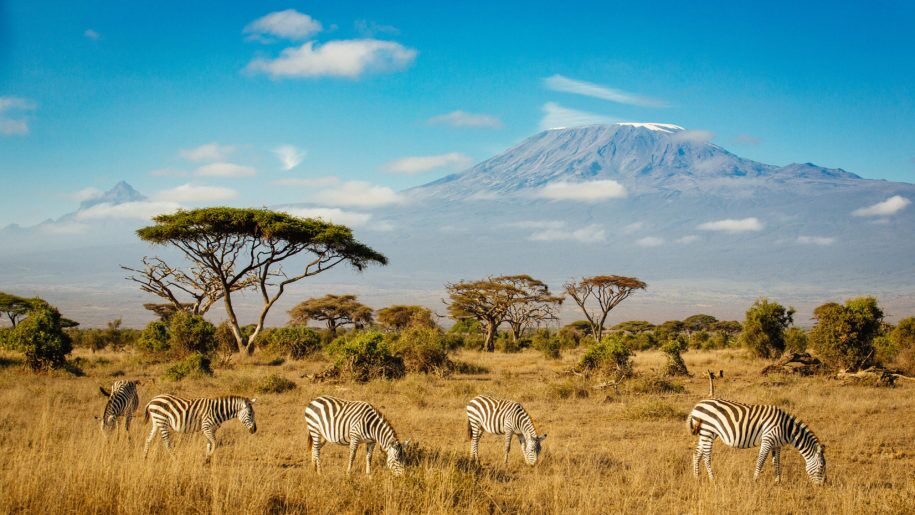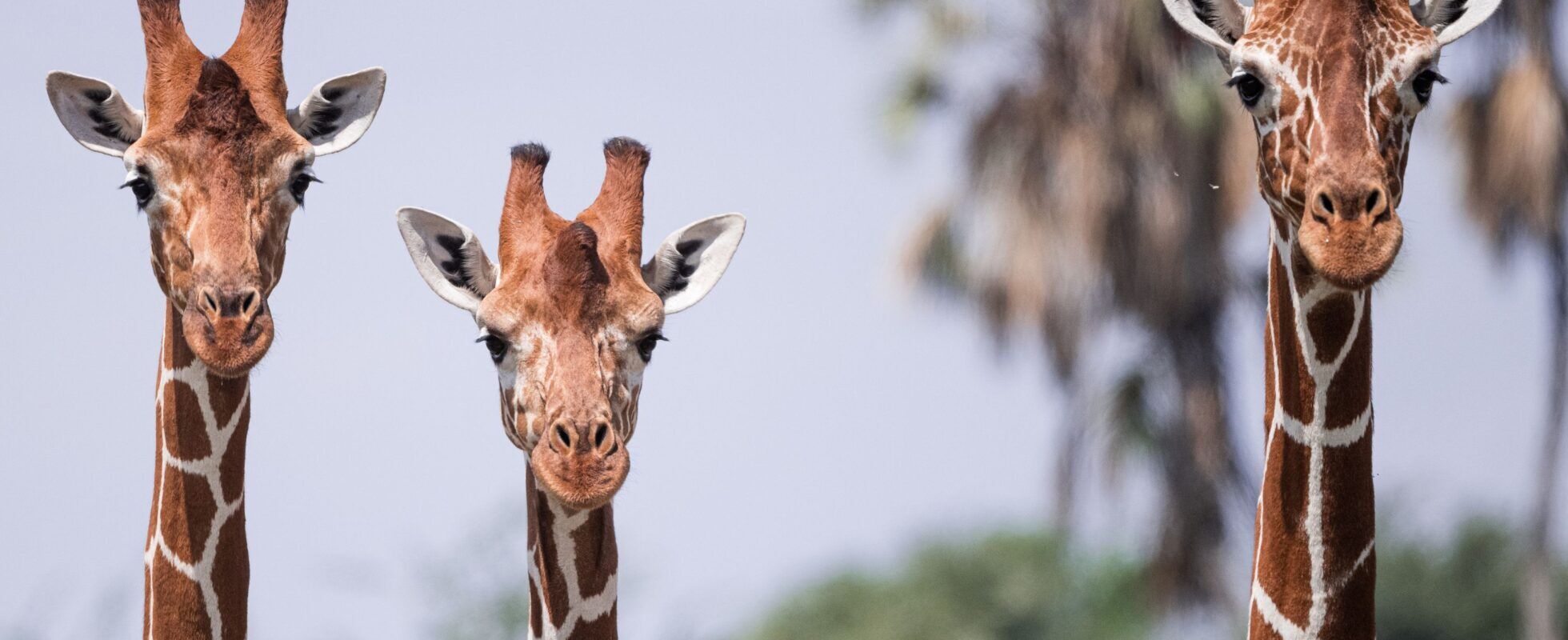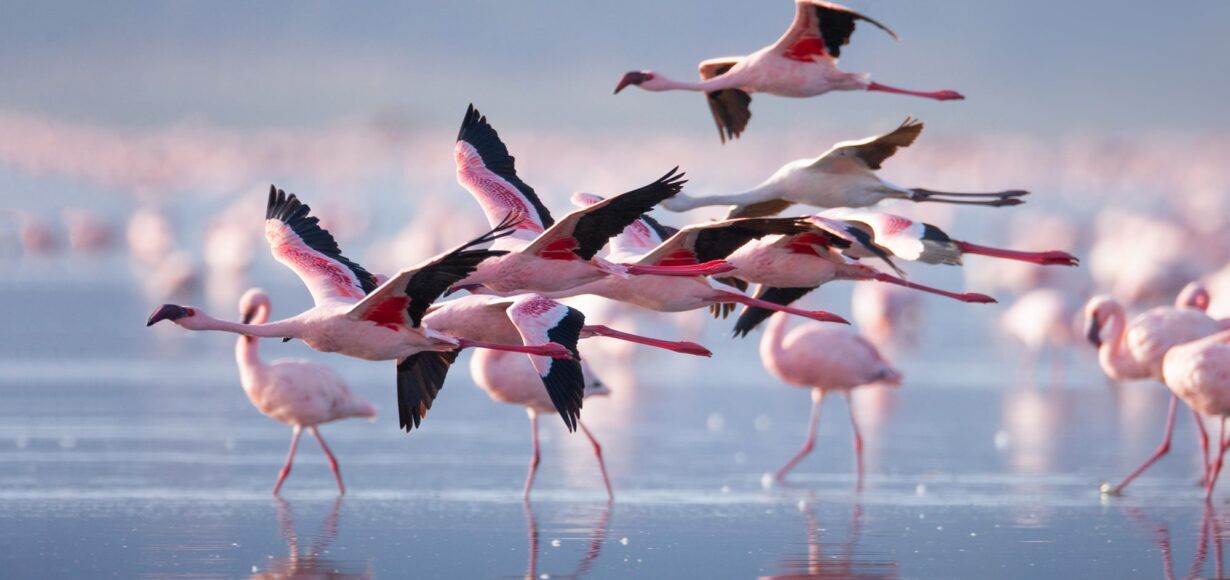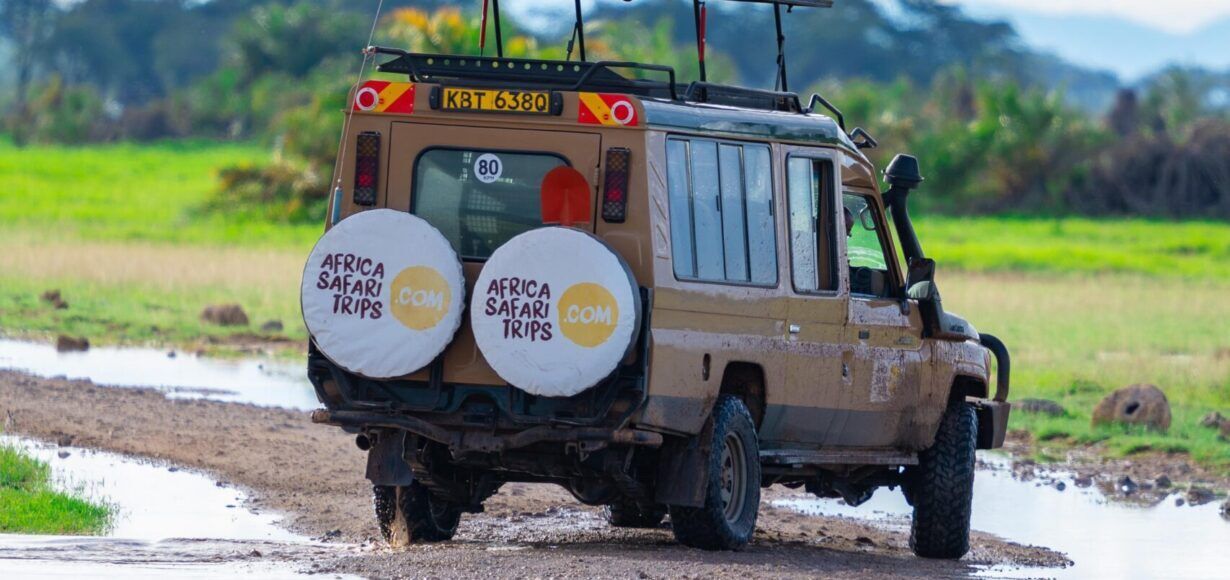
- 24/7 service
- All accommodations

With beautiful landscapes and hundreds of animals, Samburu National Reserve guarantees the sort of game viewing you otherwise would only experience watching National Geographic. This park is 165 square kilometres big and is about a five to six-hour drive from Nairobi. It’s a great place to start your safari adventure since it has a semi-dry desert and savannah landscape. This means for you: a great visibility over the park and its river which attracts many animals.
Samburu is home to four of the Big Five (lion, leopard, elephant and buffalo) and the Samburu Special Five which you can see in the pictures above (reticulated giraffe, Grévy’s zebra, beisa oryx, Somali ostrich and gerenuk). Samburu is the only place in the world that has all of these rare animals in close proximity of each other. Add to this picture the over nine hundred elephants in large families, and you know this is a spectacular park to visit.
Follow the banks of the Ewaso Nyiro River for the best game viewing. It is the only source of water for many animals, especially during dry seasons. African wild dogs, Grévy’s zebras, gerenuks and Beisa oryxes come to drink here, while crocodiles and hippos use it to hunt for prey.
Another reason to visit is the Samburu people, a traditionally nomadic tribe related to the Maasai. They live in secluded bomas: little villages with a circular wooden fence. Their huts have rounded roofs made out of cowdung. Up to today, they live as pastoralists with mostly herds of cows, sheep or goats. As a break in between safaris, it’s possible to visit one of their bomas to get familiar with the traditional life of Samburu people.
Last but not least, the park is known for being home to Kamunyak, “the miracle lioness”. Her name means “blessed one”, and blessed she was. She became famous for taking at least six baby oryxes under her care. Her story is one in a million!
Samburu National Reserve is 310 kilometres from Nairobi which is a five to six hour drive. It’s also possible to go by plane from Nairobi to different airstrips in Samburu, which takes 1.5 hours.
Kenya has a cold season from June to November with average temperatures of 20°C during the day. Nights can get cold during this season, so it’s best to take a sweater. Mid-October to November is the short rainy season, after which temperatures rise up to 30°C during the day from December to April. April and May come with showers again as this is the long rainy season. It normally doesn’t rain throughout the day as one sees sunny mornings with rain clouds building up towards the afternoons and evenings.
You can visit Samburu all year round, but the best time is probably the dry season: June to October and December to March. During the rainy months of November, April and May the road conditions might be less than optimal.
From the Samburu Special Five to four of the Big Five, from the Samburu tribe to Kamunyak, the “miracle lioness” – Samburu National Reserve has very special inhabitants and gives you the possibility of getting to know them during exciting safaris and unforgettable meet-and-greets.


